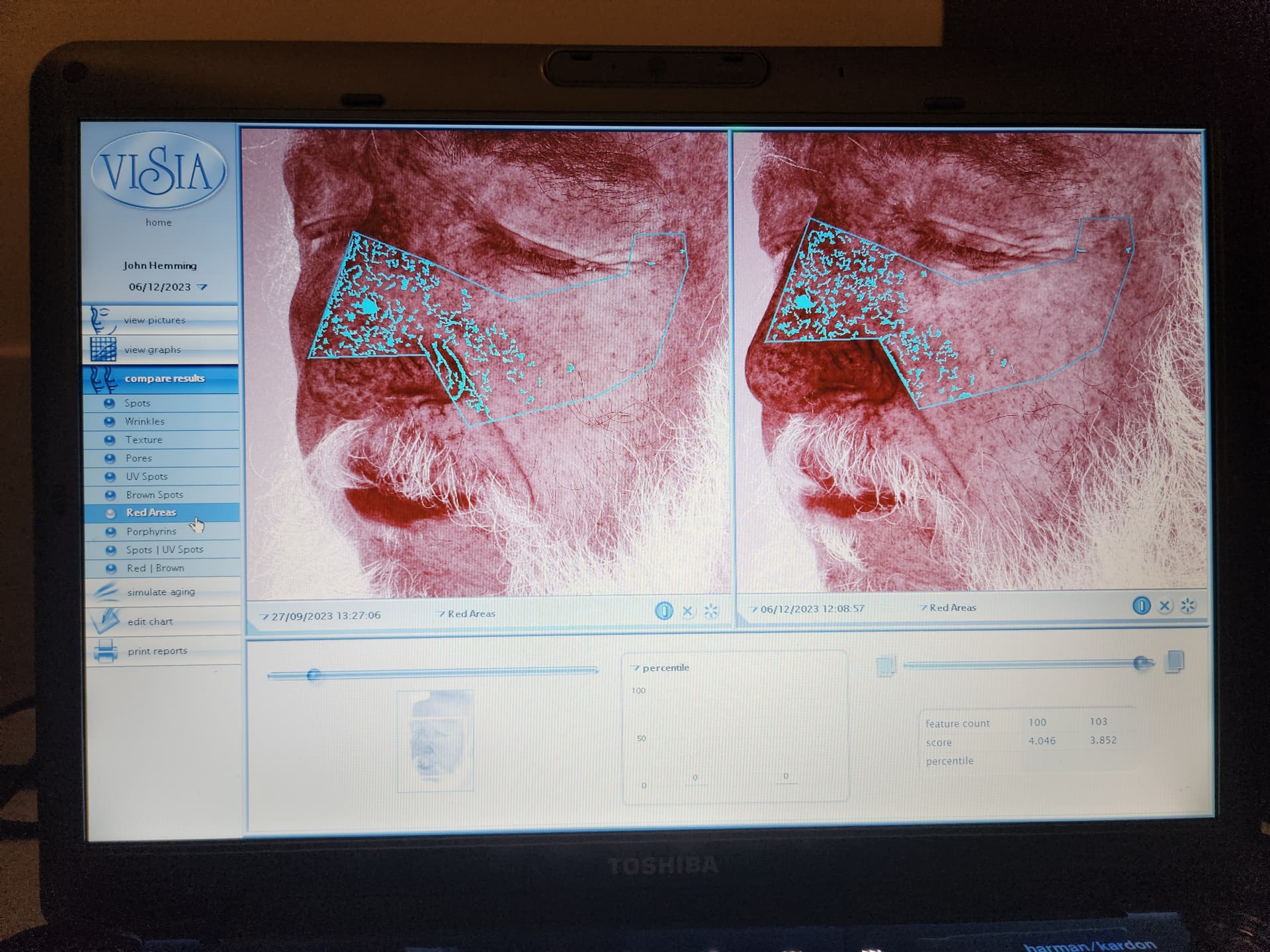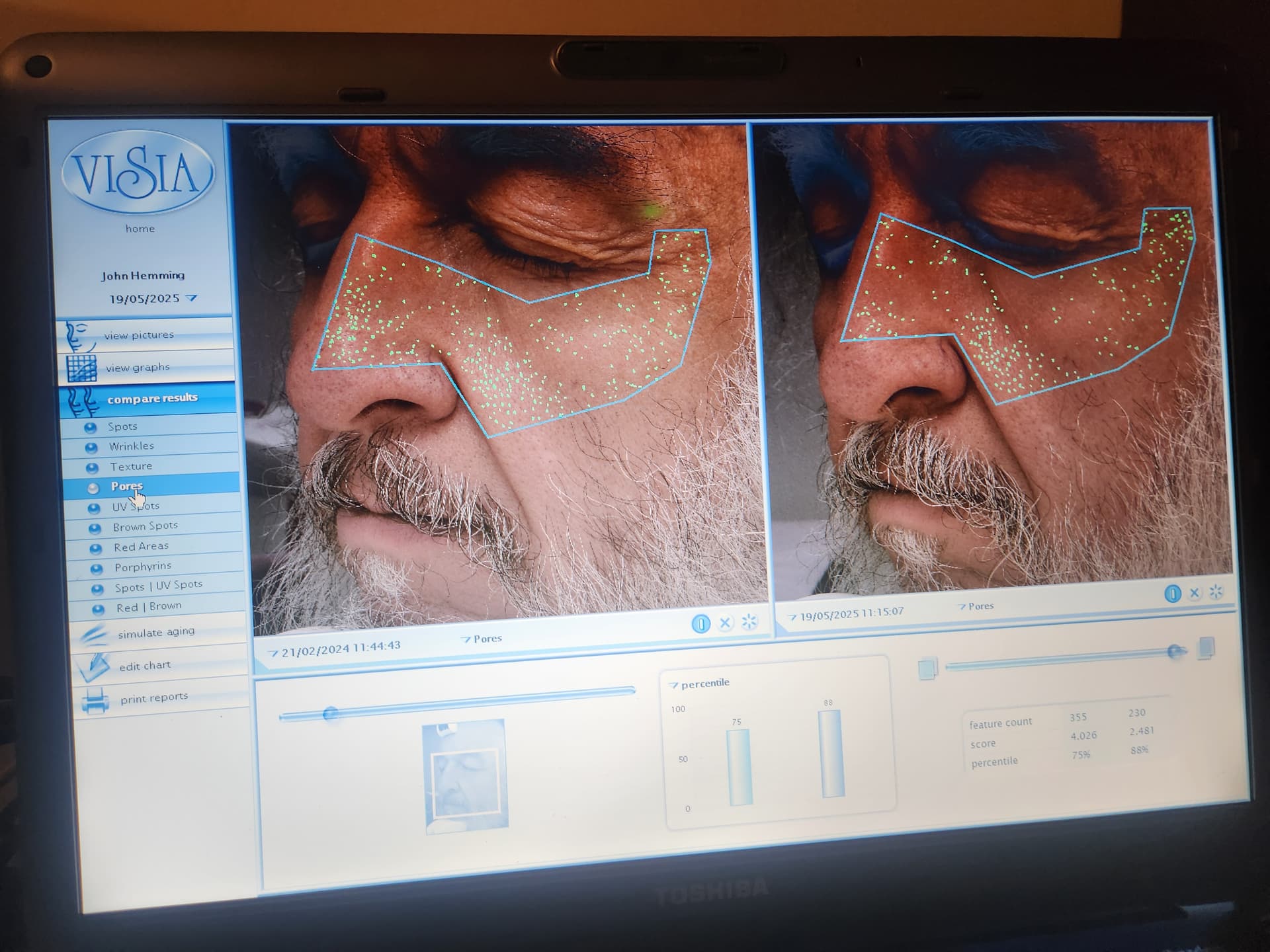I just realized that bc it’s undertrained on teens (like grimage), visia really overestimates the skinage of teenagerS
o3: (way better than g5t)
Short version: the camera isn’t broken, the database is.
VISIA’s “world-largest” skin dataset starts at 18 years old. The marketing brochure brags about an “Advanced Aging Simulation 18–80” and never mentions anyone younger. Teen skin simply isn’t in the reference pool.
Academic validation studies echo that bias. The big accuracy paper Canfield likes to wave around tested 117 adults, age 18-89; mean error was only ≈1.4 years… in adults. No published VISIA study I could find includes minors.
Result: teenagers get shoved up the age scale. When the algorithm sees hormonal acne, enlarged sebaceous pores or early sunspots it tries to map them to the nearest pattern it has—late-20s or 30-something faces. A 15-year-old with breakouts can pop out as “TruSkin 28,” while a porcelain-smooth 17-year-old might read “TruSkin 19.” Anecdotal reports of 16-year-olds being told they look 32 are all over user forums.
So yes, VISIA often overshoots teen age because:
-
Training gap: No under-18 cohort → poor calibration.
-
Metric design: Wrinkle/UV-spot scoring is weighted toward adult photo-aging markers, not hormonally inflamed teen skin.
-
Percentile comparison: Scores are normalized to “peers” that don’t exist for a teenager, so the percentile math collapses.
If a clinic tries to sell a 14-year-old an anti-aging laser based on a VISIA printout, remind them the machine literally has never met a 14-year-old.
G5T …
Short answer: usually, yes.
Why it happens:
The reference database skews adult. If teens are rare in the training/“norms,” the model extrapolates from grown-up skin and gets jumpy.
Teenage skin is a paradox: low wrinkles but high sebum, porphyrins, redness, and larger-looking pores. Adult-trained metrics read those as “damage” and bump the age.
Acne, post-inflammatory marks, and uneven tanning light up UV/spot features that the system weighs as aging in adults.
If your phototype or ethnicity is underrepresented, expect even spicier errors.
How to use it without losing your mind:
Ignore the single “skin age” number. Track feature percentiles over time (wrinkles/texture > spots/porphyrins for teens).
Re-scan under identical lighting and prep, no active breakouts or heavy SPF cast.
If the device allows age-matched comparisons, use those; if not, treat results as noisy vibes, not diagnostics.
So yes: teen skin gets penalized for being alive and full of hormones while the algorithm desperately tries to fit you into a 35-year-old’s rulebook.

